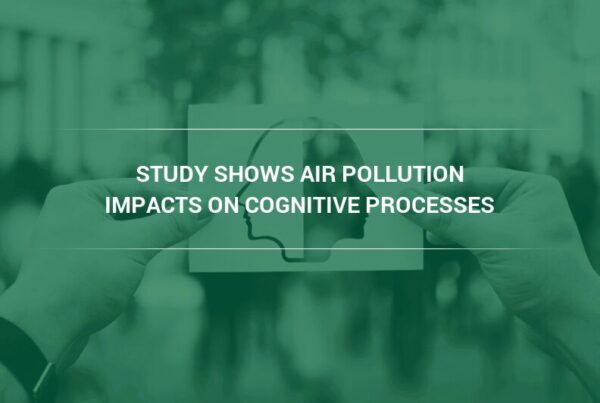The recent results of a long-term experiment have revealed a correlation between exposure to air pollution and rapid deterioration of bone strength and density in menopausal women.
Osteoporosis affects an estimated 10 million Americans, with approximately 2.1 million osteoporosis-related bone fractures resulting in an impact of upwards of $20 billion on the American healthcare system each year. Osteoporosis is more likely to affect women, and postmenopausal women are at the greatest risk, with half of the women over fifty experiencing a bone fracture as a result of osteoporosis.
Though it is widely known that air pollution exposure can cause severe and sometimes life-threatening health complications in respiratory and cardiovascular symptoms, many of the other health effects of air pollution fly under the radar.
The study was published in the peer-reviewed, open-access journal eClinicalMedicine, which is part of The Lancet Discovery Science.
161,808 postmenopausal women from various ethnic backgrounds participated in the Women’s Health Initiative survey, which provided the researchers with data for their analysis. Based on the participants’ residential locations, they calculated their exposure to air pollution (PM10, NO, NO2, and SO2). Using dual-energy X-ray absorptiometry, they assessed bone mineral density (BMD; whole-body, total hip, femoral neck, and lumbar spine) at registration and follow-up at years one, three, and six.
The study revealed a link between air pollution exposure and bone deterioration, with nitrogen oxides having the biggest impact on bone strength. In fact, the rate at which participants’ bones deteriorate when regularly exposed to nitrogen is twice as high as the rate attributable to natural aging processes.
“This study supports ours and other findings of an association between air pollution and bone damage in postmenopausal women. This association was independent of socioeconomic, geographic, and lifestyle factors,” said the research team led by scientists from Columbia University, UCLA, UNC Chapel Hill, and other prominent research institutions.
Reducing Air Pollution Exposure with Indoor Air Filtration
Americans spend at least 90% of their time indoors, where air can be up to fifty times more polluted than outdoor air because concentrations of pollutants build up in unventilated spaces, in addition to the numerous hazardous pollutants that originate from indoor sources.
Common indoor air pollutants in residential, commercial, and office spaces include:
- Cleaning chemicals. Cleaning chemicals, including bleach, can be a major source of indoor air pollution due to the residue they leave on surfaces and in the air. While using cleaning chemicals is obviously necessary, they can become a health hazard when allowed to build up in stagnant indoor spaces.
- Printers and copier machines. Any machines or equipment that use large quantities of ink can be a significant source of volatile organic compounds (VOCs).
- Furniture and furnishings. One of the most frequent sources of VOC off-gassing is new furnishings, which release substances like formaldehyde into the home environment. This is particularly valid when it comes to mass-produced or inexpensive furniture.
- Air fresheners. When working or living in close proximity to others, air freshener may feel like an absolute necessity. However, air fresheners can linger in the air and worsen indoor air quality without proper ventilation. Additionally, unpleasant odors that don’t seem to move on may be a sign that your building’s circulation is inadequate.
- Building inhabitants. The people who work in an office can be a source of indoor pollutants. People can bring pollen, dust, pet dander, and other particulate matter into the building on their clothing. Additionally, humans drop an average of 40,000 skin cells every minute, which adds up to a lot of dust by the end of a single day, and respiration adds moisture to the air. When left unchecked, excessive moisture not only feels uncomfortable to breathe but can encourage the growth of mold and mildew.
- Pets. Similarly, pets can be a significant source of particle pollution due to the shedding of fur and skin cells. Keeping indoor plants may have additional effects on air quality, both positive and negative, depending on the species.
- Outdoor sources. Outdoor sources of pollution can easily enter a building and become trapped inside due to poor ventilation. This is especially prevalent for buildings located in high-pollution areas, such as next to a busy road or in a highly polluted city. Outdoor sources of air pollution can enter through doors, and windows, as well as on people’s clothes. When buildings are not properly ventilated or repeatedly circulate the same polluted air due to a lack of adequate air filtration, these pollutants continue to build up indoors.
While many people assume that the filters in their HVAC systems will protect them from these pollutants, this is often not the case. The air filters that come with your HVAC system are designed to protect the system itself from larger particles, which are much larger than the particles that cause significant health effects. Furthermore, HVAC system filters are rarely, if ever in residential and commercial buildings, equipped to handle gaseous pollutants such as nitrogen oxides that are linked to significant bone deterioration.
To target both particulate matter and gaseous pollutants and optimize indoor air quality, consider a premium air purifier, such as Camfil’s City M. The City M uses both an activated carbon filter to remove gaseous pollutants from the air as well as an actual tested and certified HEPA filter to trap more than 99.995% of particulate matter at the most penetrating particle size. The device is non-intrusive, quiet, and plugs into standard electrical outlets, making it accessible for any home, office, gym, studio, or commercial space.
Contact your local Camfil representative to find out what air filtration solutions are right for you.
About Camfil Clean Air Solutions
For more than half a century, Camfil has been helping people breathe cleaner air. As a leading manufacturer of premium clean air solutions, we provide commercial and industrial systems for air filtration and air pollution control that improve worker and equipment productivity, minimize energy use, and benefit human health and the environment. We firmly believe that the best solutions for our customers are the best solutions for our planet, too. That’s why every step of the way – from design to delivery and across the product life cycle – we consider the impact of what we do on people and on the world around us. Through a fresh approach to problem-solving, innovative design, precise process control, and a strong customer focus we aim to conserve more, use less and find better ways – so we can all breathe easier.
The Camfil Group is headquartered in Stockholm, Sweden, and has 31 manufacturing sites, six R&D centers, local sales offices in 35+ countries, and about 5,200 employees and growing. We proudly serve and support customers in a wide variety of industries and in communities across the world. To discover how Camfil USA can help you to protect people, processes and the environment, visit us at www.camfil.us/
##
Media Contact:
Lynne Laake
Camfil USA Air Filters
T: 888.599.6620
E: Lynne.Laake@camfil.com
F: Friend Camfil USA on Facebook
T: Follow Camfil USA on Twitter
Y: Watch Camfil Videos on YouTube
L: Follow our LinkedIn Page
Sources:
https://www.thelancet.com/journals/eclinm/article/PIIS2589-5370(23)00041-X/fulltext



